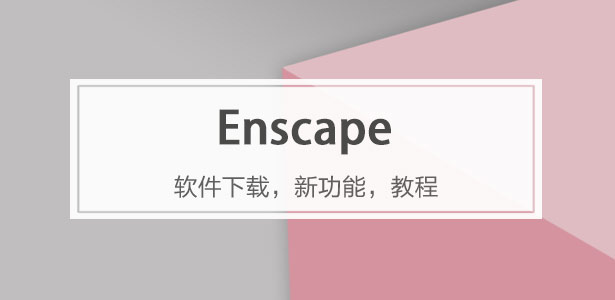* 主體類型
* 企業名稱
* 信用代碼
* 所在行業
* 企業規模
* 所在職位
* 姓名
* 所在行業
* 學歷
* 工作性質
請先選擇行業
您還可以選擇以下福利:
行業福利,領完即止!

下載app免費領取會員



宛如遍布苔蘚的山脊的瑞典Wendelstrand湖畔小屋
snøhetta's wendelstrand lakehouse resembles a moss-covered spine in sweden
由專筑網韓慧慧,小R編譯
Snøhetta建筑事務所設計了Wendelstrand湖畔小屋,位于瑞典Gothenburg郊外的Mölnlycke小鎮上,該建筑屬于一個正在開發的大型項目,也是其重要的聚集活動空間。Wendelstrand既可以是一個住宅社區,也可以是一個休閑的公共活動區,這也是設計師的宗旨。該建筑內部設計有工作區、餐飲區、健身區和活動區等空間,功能齊全,也為該地區提供了一個可持續發展理念下的新型建筑模式。
該項目于2022年開始建造,建筑整體呈水平方向延伸,像是一條山脊,實現了古與今的對話。建筑采用綠色種植屋頂,與周圍環境相融合。為進一步加強古與今之間的聯系,建筑材料選用的是該場地內原采石場的石材,歷史底蘊豐厚。
In the Swedish town of Mölnlycke, outside Gothenburg, Snøhetta‘s Wendelstrand Lakehouse stands as the central gathering space within a visionary development. Wendelstrand is at once a residential development and a community designed for interaction and leisure. The Lakehouse is the heart of this vision, offering spaces for work, dining, fitness, and events. It is both a functional hub and an architectural symbol of the area’s sustainable future.
The Lakehouse, which broke ground in early 2022, is an elongated structure designed to camouflage with its natural surroundings. Its form evokes the shape of a spine, extending across the landscape and bridging the gap between the past and the present. This connection between old and new is further emphasized by the building’s materials, which draw directly from the site’s history as a former quarry.

images © Kalle Sanner
Snøhetta建筑事務所設計的Wendelstrand湖畔小屋的靈感來源于周邊的自然景觀。建筑較低樓層材料采用的是混凝土與石材,使得建筑穩穩嵌入基巖之中。這些材料的選用也呼應了該地區的崎嶇地形,也是對該場地原來作為采石場的紀念,同時加強了人工建筑與自然環境之間的聯系。
湖畔小屋內部設計有貫穿各樓層的共享中庭,該設計手法使得室內可引入更多的自然光線,通透感增強,其功能靈活性也較高,可作為聚會交流的場地,舉辦音樂會或演出等活動,也可作為休閑場地。該中庭通向室外的圓形露天劇場,劇場面向Landvetter湖,模糊了建筑與自然之間的界限。
Snøhetta’s design of the Wendelstrand Lakehouse is informed by the surrounding landscape. The lower floors of concrete and stone are embedded in the bedrock, offering a solid and grounded connection to the earth. With these materials to reflect the rugged terrain and the site’s quarrying past, the architects reinforce the relationship between the built environment and the natural landscape.
At the core of the Lakehouse is an open atrium that rises through all the building’s levels. This vertical space serves as a gathering point, allowing natural light to flood the interior and enhancing the building’s sense of openness. The atrium is flexible, able to accommodate concerts, performances, or quieter moments of relaxation. It spills out into an open-air amphitheater, which overlooks Lake Landvetter, blurring the line between the built and natural world.

▲ Wendelstrand湖畔小屋是瑞典Mölnlycke住宅開發區的重點項目
Wendelstrand Lakehouse is the heart of a new residential development in Mölnlycke, Sweden
Snøhetta建筑事務所在設計Wendelstrand湖畔小屋時,始終堅持可持續發展的建筑設計理念。建筑采用了節能降耗措施,在材料選取上反復推敲,盡可能減少碳足跡的影響。該項目的設計宗旨是建筑與自然環境相互交融,建筑選擇綠色種植屋頂,猶如樹冠,種植有草本植物、苔蘚和野花等本地物種,可以調節雨水徑流、降低熱島效應,有助于物種多樣性的發展。
湖畔小屋頂層的表皮仍遵循親近自然的設計原則,采用集成木材和層壓木材,使其具有柔和的肌理,與周邊自然環境相得益彰。建筑立面設計有大面積玻璃幕墻,其上有著光影圖案,像是模擬陽光透過樹梢的光影效果,這種設計手法可以減少內部空間的太陽輻射,提升建筑能效。
Snøhetta’s commitment to sustainability is clear throughout the Wendelstrand development, and the Lakehouse is no exception. The building incorporates energy-efficient solutions and a careful selection of materials that minimize its environmental footprint. A key aspect of the design is its connection to nature. The functional green roof, resembling a treetop canopy, is covered with native plants such as moss, grass, and wildflowers, which help manage water runoff, mitigate heat, and promote biopersity.
The top floors of the lake house continue the theme of nature-inspired design. Constructed from glulam and laminated timber, these levels reflect the forested surroundings with their warm, organic textures. Large glass panels, adorned with strategically placed patterns, mimic the interplay of light through treetops, while also improving the building’s energy efficiency by reducing solar heat gain.

▲ 該建筑形態與周邊自然環境遙相呼應,設計靈感來源于場地內原有的采石場
the building’s form reflects the natural landscape, drawing inspiration from the site’s quarry heritage

▲ 建筑較低樓層材料選取混凝土與石材,使建筑像是從自然環境中生長出來的一樣
concrete and stone dominate the lower floors, grounding the building in its natural surroundings

▲ 建筑內部有著貫穿各樓層的共享中庭,可成為多功能聚集活動空間
a central open atrium connects all levels and serves as a flexible gathering space

▲ 露天劇場俯瞰著Landvetter湖
the open-air amphitheater overlooks Lake Landvetter

▲ 該建筑為可持續發展建筑,采用綠色種植屋頂
the building incorporates sustainable systems and is topped by a green roof

▲ 綠色屋頂上種植有本地植物,可以調節雨水徑流、降低熱島效應,有助于物種多樣性的發展
native plants on the rooftop help with water runoff, heat management, and biopersity




項目信息:
項目名稱:Wendelstrand湖畔小屋
建筑設計:Snøhetta建筑事務所
項目位置:Wendelstrand, Mölnlycke, Sweden
上次報道時間:2022年2月
攝影:Kalle Sanner
project info:
name: Wendelstrand Lakehouse
architect: Snøhetta | @snohetta
location: Wendelstrand, Mölnlycke, Sweden
previous coverage: February 2022
photography: © Kalle Sanner | @kallesanner
本文版權歸腿腿教學網及原創作者所有,未經授權,謝絕轉載。

上一篇:建筑師開出最溫柔“處方”:木拱與陽光,鑄成對抗慢性病的療愈方舟
下一篇:一次旅行看遍6位普獎得主重要作品
猜你喜歡

BIM建筑|第一名方案|蒙古國新首都哈拉和林總體規劃 / 中建設計+中國路橋+中交公規院

建筑賞析|里斯本纜車——從街道“長”出的趣味交通線

BIM建筑|薩夫迪“棲息地”新作:秦皇島海碧臺住宅二期

建筑賞析|打造合肥新地標:科大訊飛AI總部園區(一期)

建筑賞析|繪畫與建筑:空間視角下の日本藝術

BIM建筑|設計酒店113 | 東京代代木公園Trunk(Hotel):愜意生活
最新課程
推薦專題









































